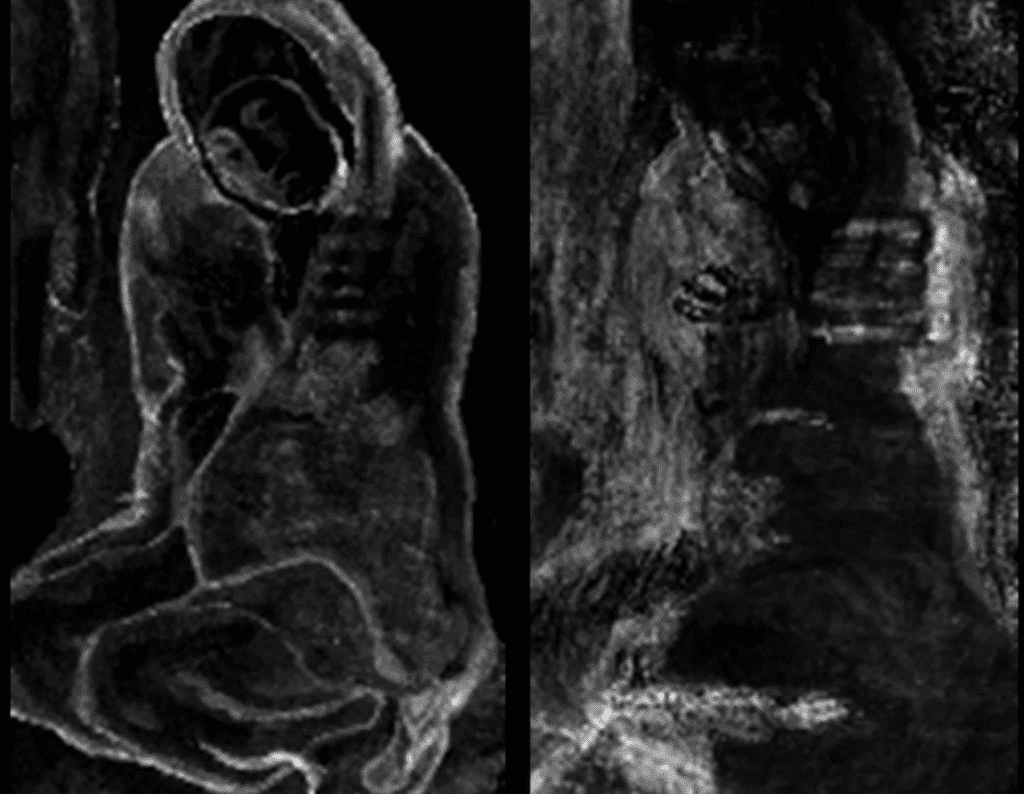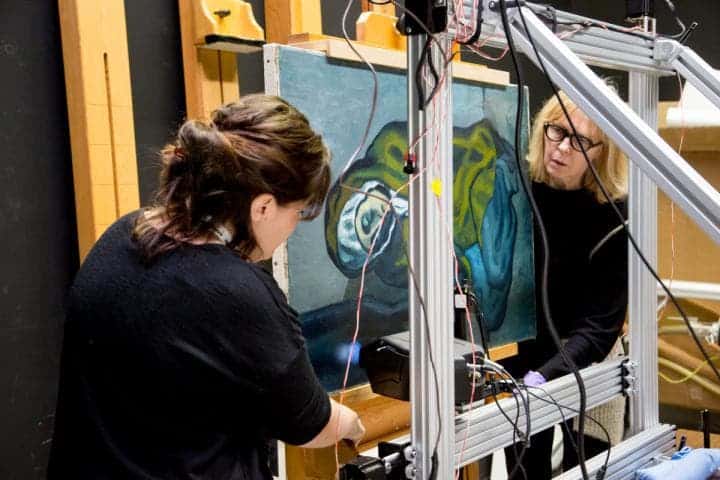
Using non-invasive imaging techniques, American and Canadian researchers were able to discern various individual layers beneath the surface of one of Pablo Picasso’s most famous works. The analysis strikingly revealed that Picasso’s “La Miséreuse Accroupie,” or “The Crouching Beggar,” was painted over a different artwork, a landscape made by a different artist. Picasso flipped the landscape by 90 degrees and even used some of the original artwork’s elements in his own painting. For instance, a cliff was turned into the edge of the cloaked woman’s back.
La Miséreuse Accroupie was finished in 1902 during Picasso’s “Blue Period” (1901-1904), when the artist almost exclusively used shades of blue or blue-green. Researchers led by John Delaney, a senior imaging scientist at the National Gallery of Art, Washington, used X-ray fluorescence and infrared reflectance hyperspectral imaging to peer through the surface of the painting.

The analysis shows that Picasso recycled his canvas from another artist, thought to be a friend, in Barcelona at the time. The reflectance transformation imaging combined with photometric stereo provided detailed information about the brush strokes as well as the application of color, clarifying the complexity in the surface texture.
“Picasso had no qualms about changing things during the painting process,” said Marc Walton, a research professor of materials science and engineering at Northwestern, in a statement. “Our international team — consisting of scientists, a curator and a conservator — has begun to tease apart the complexity of ‘La Miséreuse accroupie,’ uncovering subtle changes made by Picasso as he worked toward his final vision.”
Intriguingly, the researchers found that Picasso initially painted the woman with her arm and hand exposed, which held a disk. Researchers came to learn this after comparing different elements brushed in a yellowish paint underneath the blue-green paint overlying them. The cubist artist later changed his mind and painted a green cloak over the limb.
“We now are able to develop a chronology within the painting structure to tell a story about the artist’s developing style and possible influences,” Sandra Webster-Cook, the senior conservator of paintings at the Art Gallery of Ontario, said in a statement.

Additionally, the team of researchers, which included scientists at Northwestern University and the Art Institute of Chicago’s Center for Scientific Studies, also studied some of Picasso’s sculptures. They used X-ray fluorescence to determine which metals made up the alloys that the artist used in 39 of his bronze casts between 1905 and 1959 and 11 sheet-metal sculptures from the 1960s.
The metals used in the casts varied a lot, most likely because metal became scarce after Nazi Germany occupied France and appropriated materials for their war effort. Another new insight is that Picasso used silver to flesh out the details on a cast-iron sculpture called “Head of a Woman” (1962).
“In the context of increased material studies of Picasso’s painting practices, our study extends the potential of scientific investigations to the artist’s three-dimensional productions,” said Emeline Pouyet, a materials scientist at the Center for Scientific Studies in the Arts.
“Material evidence from the sculptures themselves can be unlocked by scientific analysis for a deeper understanding of Picasso’s bronze sculpture-making process and the history of artists, dealers and foundrymen in the production of modern sculpture.”
It’s so amazing that, more than a century after La Miséreuse Accroupie was finished, we are now able to gain access to secrets that would have otherwise been taken to the grave with Picasso.
The findings were presented at the American Association for the Advancement of Science annual meeting in Austin, Texas.






